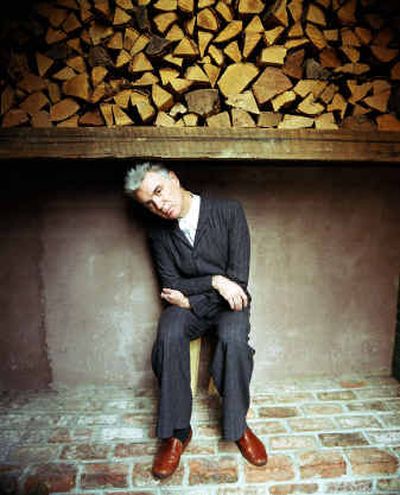Byrne rekindles his fire

David Byrne was stuck in a creative rut? I’m confused. What, then, do we call the thing LaToya Jackson has been stuck in all these years?
Yes, it’s hard to imagine Byrne creatively blocked – his seemingly endless, multi-colored flow of creativity suddenly bland and stagnant.
For the past 25 years, as a co-founder of the influential new wave outfit The Talking Heads and as a successful solo artist, David Byrne’s sense of classically refined oddity has led the art-school punk ethos into brave new directions.
Add in Byrne’s notable accomplishments in photography, film, and writing and publishing, and Byrne qualifies as a quintessential New York artistic icon, a creative tour de force right up there with fellow transplant David Bowie.
In regard to Byrne’s latest effort, “Grown Backwards,” released in March, most of the talk is centered on the creative rut David Byrne was almost in. Ironically, it seems Byrne’s unconventional songwriting approach – one that often has fused straightforward elements of pop and rock with the complex polyrhythms of Latin, world beat and even electronica (to name just a few) – was somehow getting stale.
For Byrne’s eighth career solo release, the artist took a new approach to songwriting, humming melodies into a micro-cassette recorder and eventually piecing them together into songs. “Grown Backwards” was composed from a literal reversal in styles. Instead of his usual method, one that creates textures and grooves first and then adds melodies and words later, Byrne simply did the opposite.
Byrne’s outputs always have been something of discernable pop genius, but the new approach on “Grown Backwards” has extraordinary results. Backed by the Austin group Tosca Strings, the 15 new tracks are rooted in a deep, fertile sense of intoxicating melodicism, while Byrne’s lyrical jaunts represent some of the most fascinating of his career.
It’s hardly surprising to find Byrne traversing yet another musical landscape – this time opera. But it is surprising that two opera arias (“Un di Felice” from Giuseppe Verdi’s “La Traviata” and “Au Fond du Temple Saint” from Georges Bizet’s “The Pearl Fishers,” which features a duet with Rufus Wainwright) stand out among the album’s brightest moments.
Byrne returns to Spokane on Saturday for the first time since a remarkable performance at the Fox Theater in July 2001.
And the timing couldn’t be better – critics and fans consider the “Grown Backwards” tour perhaps the best of Byrne’s solo career. At a recent Carnegie Hall performance, Byrne and company garnered a near 10-minute ovation.
It appears David Byrne is indeed out of his creative rut. But if you happen to be in one, perhaps Byrne can show you what he made out of his.